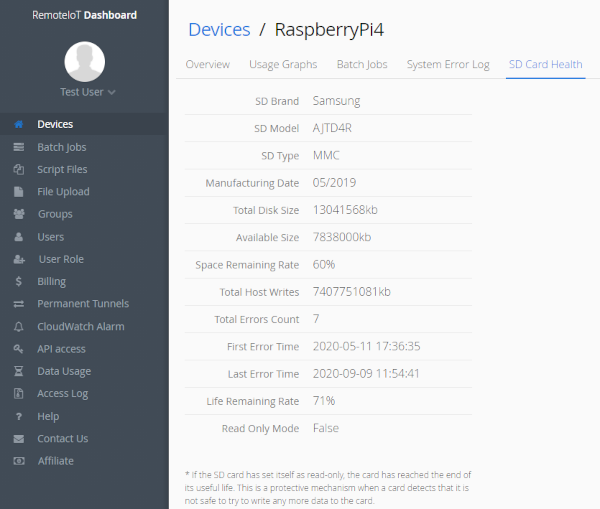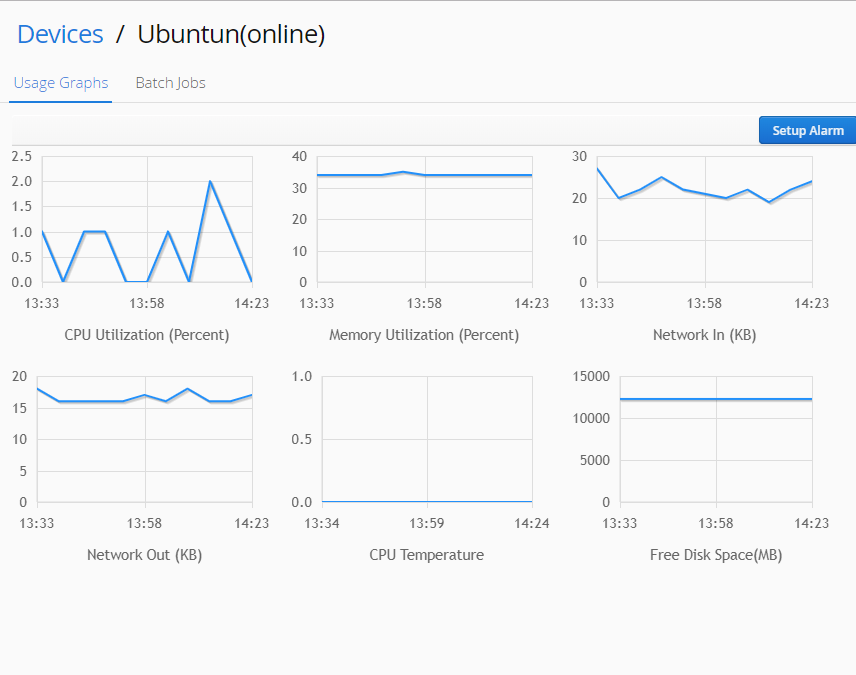
Reaching your Raspberry Pi virtually is known to be exceptionally effective, but the process as well brings probable safeguarding difficulties. To lower present threats, deploying appropriate access controls and understanding how Network Address Translation (NAT) performs is necessary. A firewall acts as a wall between one's Pi and the outside world, letting you to regulate incoming and outgoing traffic based on preset rules. By configuring your firewall to only allow trusted connections, you can significantly increase the security of your device.
IP sharing units are another vital element in remote access security. They distribute private IP addresses to devices within your network and present a single public IP address to the outside world. This approach helps to mask the internal network structure, making it challenging for attackers to target individual devices. By taking advantage of both firewalls and NAT routers, you can create a secure and robust remote access solution for your Raspberry Pi.
Gaining entry to IoT Devices from Distant Locations the Firewall
The field of Internet of Things (IoT) offers extraordinary opportunities for integration, but it also presents unique complications. One key matter is securely logging into these devices from distant locations. Traditional firewalls, designed to protect architectures from external threats, often prevent access to IoT endpoints, inhibiting the full potential of connected solutions. To handle this obstacle, innovative tactics are emerging.
- Virtual platforms allow for authorized access to IoT devices, enabling users to oversee them from anywhere with an internet link.
- Virtual Private Network approaches create a confidential tunnel between the user's device and the IoT network, safeguarding data during propagation.
- Enhanced Verification protocols enforce strict access controls, validating the identity of users before granting them access to specific devices.
By embracing these practices, organizations can utilize the full benefits of IoT while ensuring the privacy of their valuable data and framework.
Resolving Issues: Liaising to Raspberry Pis Behind Network Address Translation (NAT)
Network Address Translation (NAT) can sometimes pose a hurdle when trying to access your Raspberry Pi from outside your local network. While NAT effectively masks private IP addresses, it can make direct connections complex. Fortunately, there are several solutions to bridge this gap and enable seamless remote access to your Raspberry Pis.
- One common approach is to utilize a Dynamic DNS service, which provides a reliable hostname for your Pi that updates automatically even when its IP address changes.
- Another option is to set up port forwarding on your router, allowing specific ports on your Raspberry Pi to be mapped to public IP addresses. This method requires careful configuration and understanding of network protocols.
- For more secure access, consider implementing a VPN (Virtual Private Network). A VPN encrypts your connection and routes it through a safe server, masking your real IP address and providing an extra layer of protection.
By exploring these strategies and selecting the most appropriate solution for your needs, you can effectively bridge the gap created by NAT and gain reliable remote access to your Raspberry Pis, unlocking their full potential from anywhere with an internet connection.
Remote Management: Getting to IoT Devices Through Firewalls
Remote access related to IoT devices may be a challenge when dealing with firewalls. These security measures engineered to protect your network can sometimes obstruct your ability to control your connected devices from afar. However, comprehending the principles behind firewall operation and implementing tailored configurations can facilitate a secure pathway for remote oversight.
One common approach is to create port forwarding rules. This involves redirecting specific IP addresses and ports to your IoT device, effectively opening a direct connection. Another method uses VPNs (Virtual Private Networks). By creating a secure tunnel between your device and the network where your IoT device resides, you can evade firewall restrictions and gain access to your devices remotely. It's imperative to remember that implementing these solutions requires a thorough understanding of your network infrastructure and security protocols to copyright the integrity and safety of your system.
- Leverage strong passwords for your router and IoT devices.
- Repeatedly update firmware on your router and IoT devices to handle security vulnerabilities.
- Close any unnecessary services or ports on your router.
Administering Firewalls for Remote Raspberry Pi Management
Remotely accessing your Raspberry Pi might be a powerful way to exploit its capabilities. However, firewalls are crucial for securing the security of your device. Properly customizing firewall rules grants you to control incoming and outgoing network traffic, preventing unauthorized interfaces. Understanding how to control these settings is paramount for guaranteeing the integrity of your Raspberry Pi.
- Implement a firewall software solution designed for Raspberry Pi. Numerous varieties are available, each with its own set of attributes.
- Set clear rules that determine which ports should be open and which should remain closed.
- Analyze the use of a VPN for an extra layer of defense when connecting remotely.
Note that firewall parameters should be fitted to your specific circumstances.
Mastering Remote Control: Managing IoT Devices Past NAT
Effectively managing your Internet of Things (IoT) devices from a remote location presents unique hurdles. NAT (Network Address Translation), commonly used in home and small office networks, can complicate this process. This guide will delve into the essential steps to securely access and operate your IoT devices behind a NAT firewall.
- At the start, establish a secure connection between your remote device and your local network using a reliable VPN protocol like OpenVPN or WireGuard.
- In the next step, configure port forwarding rules on your router to allow incoming data flows to the specific ports used by your IoT devices. Ensure you only forward traffic to the required ports and use strong passwords for authentication.
- Eventually, consider implementing multi-factor authentication (MFA) for added security when accessing your IoT devices remotely. MFA adds an extra layer of protection by requiring multiple forms of verification, such as a password and a unique code sent to your phone.
By applying these best practices, you can safely and securely maintain your IoT devices from anywhere with an internet connection.
Locking down Remote Access to Your Raspberry Pi
Want to manage your Raspberry Pi projects from anywhere? A firewall is essential for safely enabling remote access. It acts as a gatekeeper, blocking unauthorized requests while allowing whitelisted requests through. By implementing proper firewall configurations, you can ensure your Pi remains secure even when accessed remotely.
Begin by identifying the services you need to expose externally. HTTP servers are common examples. Configure your firewall to open inbound access on the specific ports used by these services. Remember, a well-configured firewall will only open the necessary doors, controlling potential vulnerabilities.
- Apply a robust firewall software package designed for Raspberry Pi, such as UFW or iptables.
- Implement strong passwords for your remote access accounts.
- Regularly review and update your firewall rules to address any changes in your infrastructure.
Log into Remotely to Raspberry Pis Through Firewalls and NAT Routers
Securing your Raspberry Pi within a network environment often involves traversing firewalls and Network Address Translation (NAT) routers. This can seem daunting upon first glance, but understanding these components is crucial for safely connecting to your device from afar. This guide provides an in-depth walkthrough of common techniques for remote access, empowering you to control with your Raspberry Pi effectively regardless of its physical location.
We'll delve into the fundamentals of firewalls and NAT, outlining their roles in network security. Then, we'll explore various strategies for establishing secure connections, including SSH tunneling, VPNs, and port forwarding. Also, we'll provide practical steps and examples to help you implement these techniques on your own setup.
By mastering the art of remote access, you can unlock a world of possibilities for your Raspberry Pi projects, enabling you to monitor performance, address issues, and even control your devices remotely.
Safe Remote Access for Your Raspberry Pi
Want to access your Raspberry Pi from anywhere? Follow these steps to set up secure remote access. First, choose a suitable protocol like SSH or VNC. Next, install the necessary software on your Pi. Generate a strong password and enable two-factor authentication for added security. Then, redirect the required ports on your router to your Pi's IP address. Finally, test your connection from a remote device.
- Use firewalls to protect your Raspberry Pi.
- Update your software up-to-date to patch vulnerabilities.
- Observe your system logs for suspicious activity.
From Home Network to the World: Remotely Controlling Your Raspberry Pi Across Firewalls
Your microcontroller board can be much more than just a local project. With the right setup, you can control it from anywhere in the world, regardless of firewalls or distance. This opens up a universe of possibilities - managing your home automation, accessing data remotely, or even running remote server services directly from your Pi.
While this may seem daunting at first, setting up remote access for your Raspberry Pi is surprisingly straightforward. You'll need to configure your network settings, set up a secure connection, and choose the right tools for controlling your device remotely. Here are some basic rules to get you started:
* First, ensure your home network is configured properly. This includes setting up port forwarding rules to allow access to your Pi from outside your local network.* Next, choose a secure connection protocol like SSH or VPN. These protocols encrypt your communications and protect your data from surveillance.* Finally, select a remote control tool that suits your needs. Popular options include VNC for graphical access, SSH clients for text-based interaction, and cloud-based platforms for simplified management.
Once you've taken these steps, you can enjoy the freedom of controlling your Raspberry Pi from anywhere with an internet connection. This opens up a world of possibilities for learning, experimenting, and building cutting-edge projects.
Utilizing IoT Devices Beyond the Local Network: Firewalls and NAT
Extending the reach of Internet of Things (IoT) devices afar from the confines of your local network requires careful consideration of security mechanisms. Firewalls serve as crucial sentries, meticulously scrutinizing incoming and outgoing traffic to block potential threats. Network Address Translation (NAT), on the other hand, allows multiple devices on a private network to share a single public IP address, boosting network efficiency and securing internal endpoints.
By implementing robust firewall configurations and employing NAT effectively, you can create a secure and smooth environment for your IoT ecosystem to thrive. This combination of tools ensures that your devices can securely collaborate with the wider internet while holding protected from malicious actors.
- Set up comprehensive firewall rules to permit only trusted traffic.
- Apply NAT to hide internal device addresses.
- Audit network activity for any suspicious behavior.
